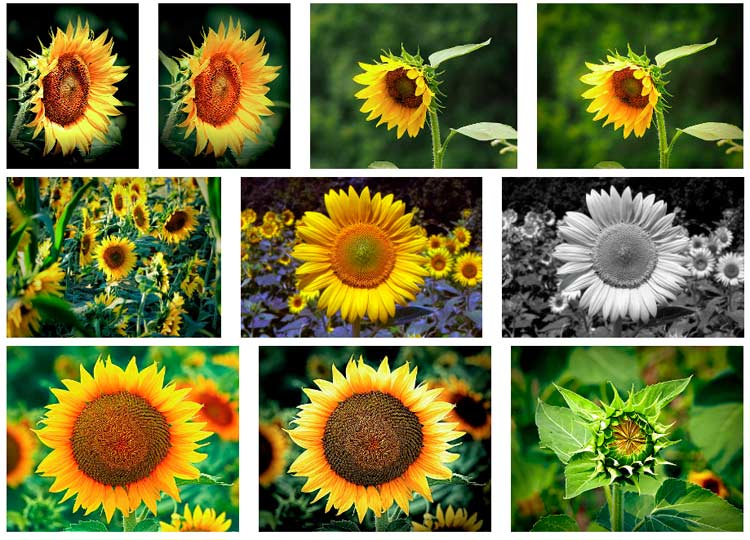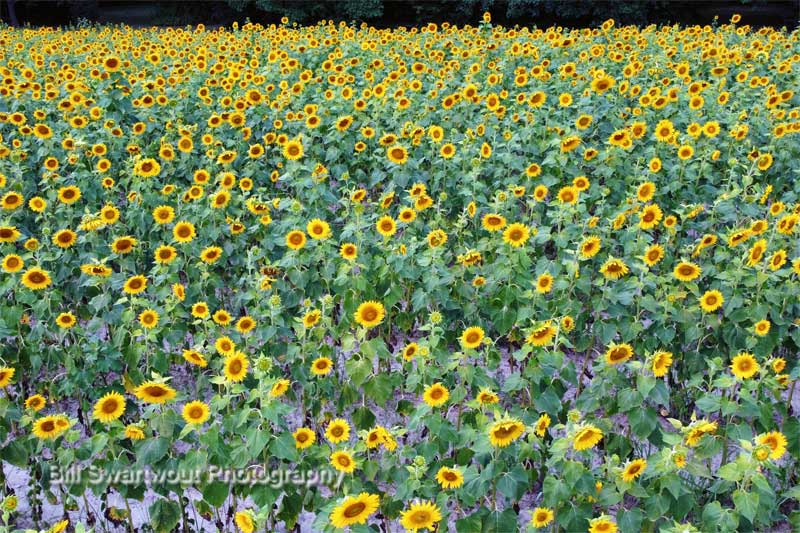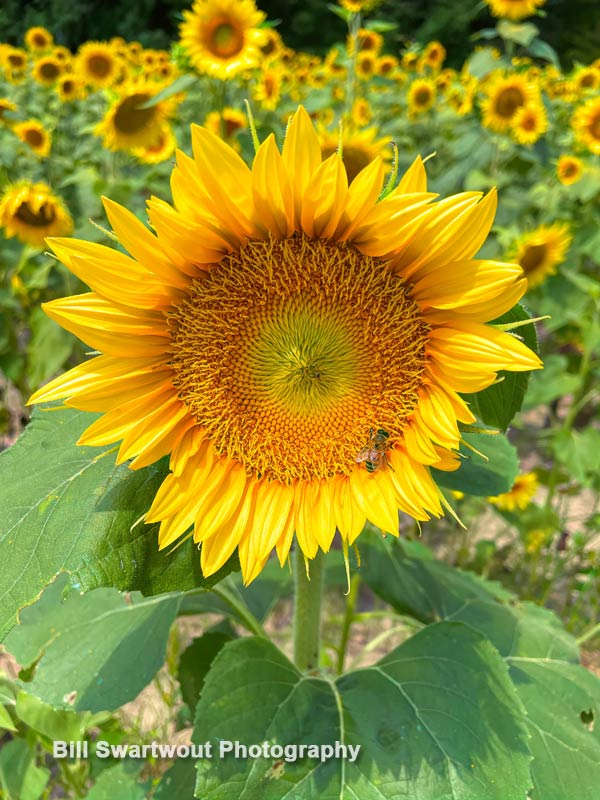Nearly everyone loves sunflowers, the most popular flowers of summer.
The sunflower stands tall to meet the rays of the midday sun – it stands tall and reaches high into the sky. Golden hues of sunshine are reflected in the petals, making this wonderful yellow bloom among the most popular flowers of summer.

A field of bright yellow sunflowers is one of summer’s most popular sights and with good reason. These cheerful, cheerful flowers are easy to grow, requiring only a sunny spot to thrive. Sunflowers are also easy to customize for any occasion: add stakes or wire for height, use in bouquets, or leave them out as the centerpiece on your kitchen table. Did you know the the flower petals within a sunflower’s cluster are usually in a a spiral pattern?

Sunflowers are usually yellow or orange. They can also be red or white, but yellow is the most common color for sunflowers. The petals on each flower all face one direction, making the sunflower look like a bright disc when it faces the sun. Sunflowers are native to North America and were first cultivated by Native Americans.
What’s not to love about sunflowers? They’re bright and cheerful, they grow in fields and on farms, and they are the most popular flowers of summer.
In fact, sunflowers have been grown for thousands of years—and they weren’t even originally intended to be flowers! They were actually used as a food source by Native Americans. The seeds were ground into flour or roasted like popcorn. Every 100 pounds of sunflower seeds yields about 40 pounds of oil, 35 pounds of high-protein meal and 20 to 25 pounds of other by-products.
Sunflowers are native to North America, but now grow all over the world. They have become an important part of many cultures around the globe, including China, Africa and South America. When Europeans got their hands on the plant it quickly became one of their favorite things to grow in their gardens.
Heliotropism – a plant’s propensity to face, and follow, the sun…
A young sunflower has a supple stem that responds to the sun. The flower will follow the sun from its rising in the east to setting in the west. Over night the stem will tend to grow more on the west side – from the “afternoon sun” and will make the head swivel back toward the east. This repeats every day for a part of the plant’s growth cycle. But as the plant matures and the head becomes laden with seeds and quite heavy, it can no longer swivel during the day. Therefore the older, larger and mature sunflowers tend to face east – toward the rising sun – and stay that way until the harvest.
Use the links below to browse or shop more of Bill’s photographs of Sunflowers and other Flora .
Link to: Sunflower Photographs
Link to: Bill’s Flora Collection
Link to: Bill’s full Gallery at Fine Art America/Pixels



I’ve often wondered. Do the flower heads turn to follow the sun during the day? They always seem to be facing in the same direction in a field. Great examples by the way.
Thank you for the comment and compliment, Steve. Also a good question – I had forgotten to include that interesting factoid. So, I just penned a paragraph that may provide an answer.
Hi Steve; If my memory serves me well, They do follow the Sun.
They do exhibit heliotropism up to a point. One they become heavily laden with seeds they end up facing east, toward the rising sun, until the harvest – because the stalk (stem) can no longer support the movement throughout the day.
The aray of sunflo9wers you have at the top of this blog is simply stunning. Well done.
You have to love these bright, happy flowers. Isn’t it interesting that they are native to North America but are the national flower of Ukraine? I did a sunflower shoot recently. Perhaps I’ll blog about it soon.
I had not thought about that – it is, indeed, interesting.
Always a treat to view your photos and read their descriptions. I learned a new word today “Heliotropism”
These are beautiful. I love the one from far back. All facing the same direction. Did you get that with your drone? I am hoping to get some sunflowers next month. We’re at a fairly high elevation, I hope it won’t be to late.
Thank you, Rebecca. Yes, that was with my drone – but not very high. I may head back there one day this week – very early in the day – for a different lighting effect.
Sunflowers are certainly very cheerful-looking! We had a volunteer sunflower in the compost heap this year. It managed to get above the leaves of the volunteer squash, and my husband snapped a couple decent reference photos for me to turn into drawings and paintings sometime soon.
That is so cool, Katrina. I would love to see that.
Hey Bill;
Great collection of sunflower photos and gave great info about them that I didn’t know.
Here’s a link to my sunflower gallery.
Very nice, Louis. You’ve got some incredible shots there.